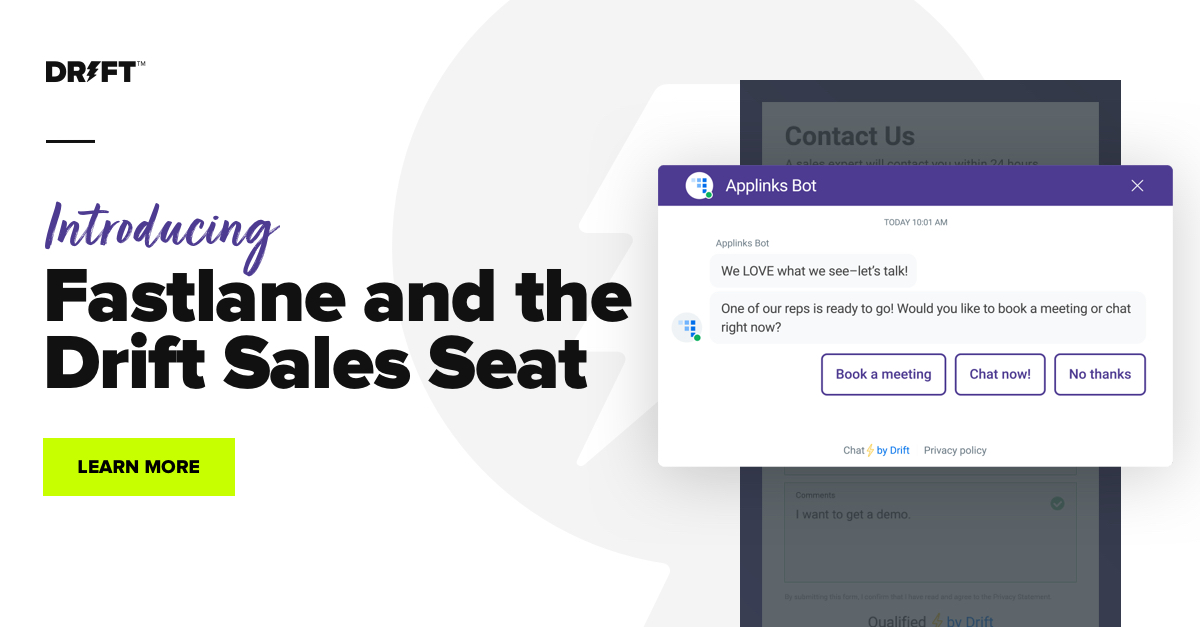A successful sales proposal can make the difference in winning or losing a sale. There isn’t a secret to it, but there are steps you can take that will help you close deals and perfect your sales game.
In this article you will learn:
- How to prepare for a potential client
- How to format and structure your sales proposal
- 15 comprehensive steps to writing a sales proposal
What Is a Sales Proposal?
A sales proposal is a document that outlines products and/or services to a prospective buyer. The proposal details the benefits, deliverables, and costs. Follow these 15 steps and every proposal you develop will be a thorough, thoughtful document that wins sales.
How Do You Write a Sales Proposal?[Template]
- Start with an Outline
- Know Your Buyer’s Problem
- Write a Killer Executive Summary
- Do Market Research
- Offer the Solution
- Identify the Deliverables
- Know Your Audience
- Be Straightforward with the Pricing
- What Is the Call-to-Action
- Provide Testimonials
- Presentation Is Important
- Keep It Simple
- Proofread. Proofread Again
- Meet in Person or Turn Your Video On
- Follow Up
1. Start with an Outline
The best way to begin a proposal is by writing an outline. Start by listing the parts of a sales proposal that need to be addressed. Utilizing a template helps make things easier. Once you have a proposal you are happy with, you can use it as a template for future sales enablement content.
Structure your sales proposal to include the following:
- Introduction: Introduce your business, your team, and your product/service. In addition, you can include social proof and testimonials that highlight success.
- Summary: Describe the customer’s challenges/problems and detail the potential issues that will arise without taking action. The summary sets you up to discuss how your product/service will correct challenges and provide an opportunity for success.
- Market Research: Ensure that you’ve done proper research not only on your customer and their needs but on the market and competitors as well.
- Deliverables: This is the section where you will detail your approach. Share the objectives, milestones, and timelines. This doesn’t need to include every detail, save some information for your meeting.
- Benefits: This is your place to shine. Show prospective buyers the value your product/service provides. The language you choose here matters most. This is where you will either grab their attention or lose their attention.
- Cost: Pricing is one of the first things buyers look for. Make this clear and give several options. For example, offer a high and low cost, depending on the product/service provided.
Pro tip: Ensure that your presentation matches what your audience wants to read. Not every client proposal will be identical. Make changes based on the prospective client, the industry, and their needs.
2. Know Your Buyer’s Problem
Understanding your buyer’s needs is key to delivering the right solution. You can do this with proper customer research. You may find there are additional challenges the buyer hasn’t thought through completely. This is a great opportunity to build value in your solution.
As you’re developing this section address these questions:
- What are the potential customer’s needs and pain points?
- How can I help uncover problems and challenges? Often, the buyer doesn’t know, so this is where previous conversations come in handy. Use your CRM!
- How does our solution solve their problems?
- What differentiates my solution from competitors?
Build more qualified pipeline and hit your number today with Drift’s conversational ai.
3. Write a Killer Executive Summary
What is the purpose of a sales proposal? Remember that this document is about the customer, not about you. It’s about showing the client that you understand their problem and how to solve it.
The executive summary is the perfect place to show how well you understand the customer and their needs. Your customers will appreciate feeling understood more than anything else.
An executive summary should be clear and straightforward. State the problem and then the solution. It’s helpful to include this in a separate cover letter.
4. Do Market Research
Understanding your customer reaches far beyond just their business. It includes understanding the market, direct competitors, and anything else that affects the buyer.
Including a brief summary of your market research will show a buyer that you have invested a lot of time in them to offer the most personalized solution. Remember, however, that your buyers are busy. Hit the high points – but don’t overwhelm them with data.
Sometimes the market research doesn’t require a separate section. But it may help you in understanding the buyer’s challenges. Use this data to your advantage.
A few questions to ask as you perform market research:
- What solutions did the buyer use previously? What were the positives and negatives?
- Who are the direct and indirect competitors? How do they compare?
- What are the competitors doing better than the buyer?
Market research is also key to many other aspects of a large and small business including identifying new business, improving performance, testing new markets, and exacting search engine optimization (SEO).
5. Offer the Solution
This is the meat and potatoes of a winning sales proposal. Above all, present yourself as an expert. If you don’t believe it, neither will they.
Explain the solution and how it will meet the needs of the buyer. Include an objective and relevant milestones. Make it powerful but straightforward. You can go into further detail during the in-person (or Zoom) meeting.
A prospective client will want to know how you will achieve results through your sales team and accountability. A winning sales proposal should include a convincing solution to their problem.
Learn how to better understand your buyers with the Conversational Sales Formula.

6. Identify the Deliverables
Once you’ve laid out the solution, identify the deliverables. Keep this section simple but actionable. As we mentioned above, details can be discussed during the meeting or once the buyer has agreed to the proposal.
Providing too many details early on can elicit questions that aren’t needed at the beginning of a relationship.
The client will want to see an approximate timeline, so be sure to include this with your deliverables. Provide an easy-to-read calendar or a bulleted list of dates.
7. Know Your Audience
Your proposal should speak to the needs of your prospective client. Understanding the buyer’s problem is one important step that we spoke to above. Learn more about their company and apply that knowledge when writing the sales proposal. If you don’t want to get ghosted, this is key.
Find out their values, motivations, what differentiates them from the competition, future growth plans, and anything else that might be relevant to the proposal.
Once you know your audience, tailor the proposal to them. Make them feel understood and you should have no trouble gaining their business.
8. Be Straightforward with Pricing
The cost can be a deal-breaker or a deal maker. There should always be a budget discussion prior to creating the sales proposal. This ensures that you and your buyer are on the same page before investing time into the document.
Propose several different options for pricing. Offering options gives buyers a feeling of control. Choose three different price points from high to low. Break down the cost so that the buyer can see the value. A concise chart or list of costs is easiest to read.
Where you place this information is important. It’s best to share pricing directly following the benefits. This will allow the buyer to connect the dots.
9. What Is the Call-to-Action?
This is where many businesses falter. A call-to-action (CTA) is the most important conclusion when writing sales proposals.
Set yourself up for success by telling the buyer their next step. Use language that assumes they will approve the proposal. If your tone is unsure, your buyer will be too.
The CTA will differ depending on the client, but should always bring you closer to closing the deal. Remember, you should always be closing with each step of the sales process and a winning proposal is no different.
If you know that the customer needs to have an internal meeting before making a decision, make yourself available to them. Offer to be on stand-by should any questions arise. And, offer to make copies of the proposal. Finally, offer to be at the meeting.
Pro tip: Make the call-to-action clear and ask for the outcome you want; a purchasing decision.
Conversational Sales is the fastest way to build trust and credibility with buyers to turn them into customers. It accelerates your sales process by connecting you with buyers at the right time. Get certified today. 
10. Add Testimonials (aka Social Proof)
The sales proposal should include endorsements from clients you’ve helped successfully. Highlight testimonials from clients in a similar industry or with similar business challenges. The goal is to be impactful.
Like anything else, quality over quantity is the name of the game with testimonials. One exceptional testimonial is more powerful than three so-so testimonials.
Once you have the approval to use a client as a testimonial, include these details:
- Customer name and company
- Customer title
- Direct quote from the customer
- Short description of the solution
- Results and timeline
Don’t ignore the positive influence of testimonials. Examples of how your solution applies to real-life scenarios can add much-needed social proof to persuade new clients.
11. Presentation Is Important
Your proposal content might be stellar, but if the presentation is poor, you’re setting yourself up for disappointment. Once you’re happy with the proposal details it’s time to really make it sing.
We highly recommend using templates. Once a template is designed, it’s easy to pop the content in for the next proposal and make minor changes as needed. If you’re creating a new proposal layout with each buyer, you’re wasting a lot of time.
There are several important presentation aspects:
- Clear titles and headlines: Consistency is key. Each section should have a clear title or headline and should look the same. Make it easy for your buyer to skim through the pages to find information.
- Design: Color and font choices should also be consistent. If one headline is bold, every headline should be bold. Don’t use more than one or two fonts in the sales proposal, and always choose a font that’s easy to read. Often, business proposals are read on mobile devices. Ensure easy readability on both mobile and desktop computers.
- Visuals: The brain processes images faster than text. 90% of information transmitted to the brain is visual, so it only makes sense to utilize graphic design and include images. Relevant graphs and tables can be helpful in persuading your buyer.
The presentation will vary depending on the type of sales proposal. Don’t just let your Design team whip up something on their own. Make sure to pass on a low-fi version with comments on the look and feel you want. You know your buyer best, so do what you feel is right.
Sometimes a Request for Proposal (RFP) will specify the way a sales proposal template should be designed. In that case, you will need to make edits to meet those expectations.
12. Keep It Simple
Keep things simple for prospective clients. Instead of using technical jargon, use language everyone can understand. Don’t assume your potential client will understand. Always use layman’s terms to avoid confusion and frustration.
Make things as easy as possible for a successful deal. A few tips to keep your sales proposal simple:
- Don’t oversell
- Utilize lists to make things easy to read
- Avoid generalizations – it’s the #1 reason you’re not closing more.
- Make connections regarding the problem and solution
- Be available to answer questions (and stay away from these phrases)
13. Proofread. Then Proofread Again.
Nothing turns off a client more than incorrect grammar and spelling errors. Consider how a buyer would feel seeing their business name misspelled. It’s hard to rectify a major error like this.
Give yourself time to proofread the sales proposal several times. Then ask a couple of others to proofread the document as well. It’s easy to miss things when you’ve spent a lot of time proposal writing. A new pair of eyes will bring a fresh perspective.
There are free online resources that can help with proofreading as well. Hemingway App can help improve readability. Grammarly is helpful with grammar and spelling. There are others online as well.
14. Meet in Person or Turn Your Video On
Remote meetings are still very much the reality for much of the world. Buyers are busy but, when it’s safe to do so again, you can ask to schedule an in-person meeting to make an impression. But no matter if you’re meeting in person or with your video on, it’s always better to go through a sales proposal with the buyers face-to-face. Never just send it over email and hope for the best. Guide them toward the outcome you want.
If the buyer pushes back when you suggest a meeting (again – in person or virtual), it’s okay to be straightforward. Tell them that you feel it is in their best interest to meet so that you can clarify, expand and answer any questions or specific problems they may have.
That means you need to be prepared when you meet. Have valuable information that isn’t included in the proposal. Be ready to answer additional questions.
If meeting in person or over Zoom is not an option, Drift Video can help you engage buyers with quick, personalized videos and GIFs – so you can start more conversations, shorten sales cycles, and connect with more of the buying committee. Learn more about using Drift Video to close deals here.
15. Follow Up
You’ve completed the sales proposal and met with your prospective client. Now what? Often, sales professionals drop the ball once a proposal is complete.
A proper follow-up should happen two or three days after the meeting. This gives the buyer a chance to review the proposal with their team but continues to keep it fresh in their minds.
A phone call is an ideal follow-up to answer questions, overcome objections and confirm the next steps. Consistent communication is important for successful sales.
—
You’ve made it! These 15 steps are key to writing a winning sales proposal. Which step will help you the most?
Editor’s Note: This article was published in January 2020 and has been updated to reflect new information.











